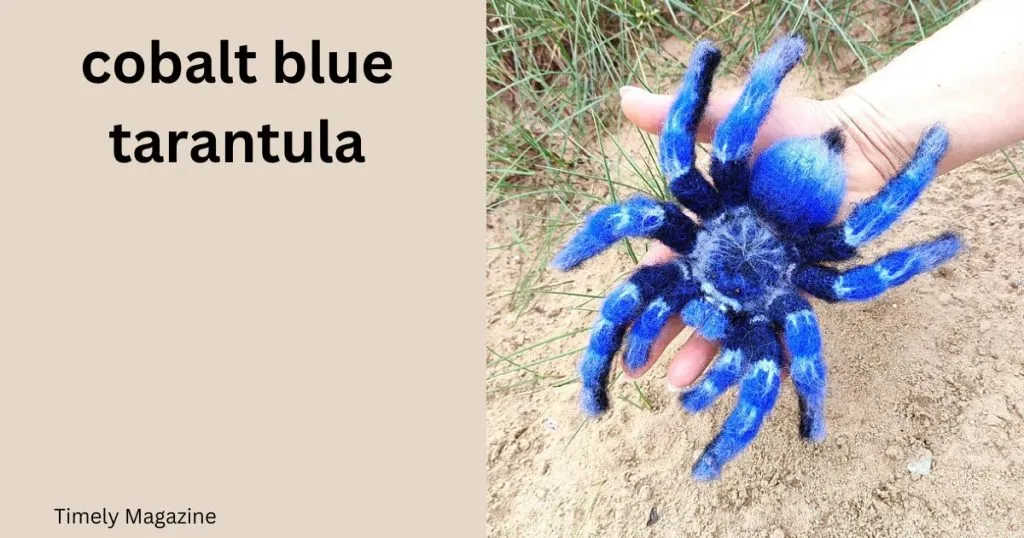Origin and Discovery of the Cobalt Blue Tarantula
The Cobalt Blue Tarantula, scientifically known as Cyriopagopus lividus, is a striking species native to the tropical forests of Myanmar and Thailand. The exact date of its discovery isn’t widely publicized in the same way as other, more famous animals. However, it began to gain popularity in the pet trade during the late 1990s and early 2000s. This vibrant species quickly captivated arachnid enthusiasts due to its mesmerizing iridescent blue coloration. The cobalt blue tarantula’s unique appearance made it a highly sought-after specimen, significantly increasing its visibility within the exotic pet community. Its introduction into the hobby sparked considerable interest, leading to greater research and understanding of its specific care requirements and natural behaviors. The timeline of its discovery and subsequent rise to prominence is a testament to the evolving interests and practices within the pet industry.
The Cobalt Blue Tarantula’s Native Habitat
Understanding the natural habitat of the Cobalt Blue Tarantula is crucial for providing proper care in captivity. These tarantulas originate from the humid, tropical environments of Myanmar and Thailand. Within these regions, they typically reside in burrows, often found near the base of trees or within the forest floor. The climate in these areas is characterized by high humidity and consistent temperatures. The tarantulas prefer a slightly elevated temperature, with ample moisture to thrive. These conditions are essential for their health and well-being, influencing their molting cycles, feeding habits, and overall activity levels. Replicating these environmental conditions in a captive setting is paramount to ensure the longevity and health of these fascinating creatures. Proper environmental control minimizes stress and allows the tarantula to exhibit natural behaviors, enriching the captive experience.
Understanding the Cobalt Blue Tarantula’s Appearance
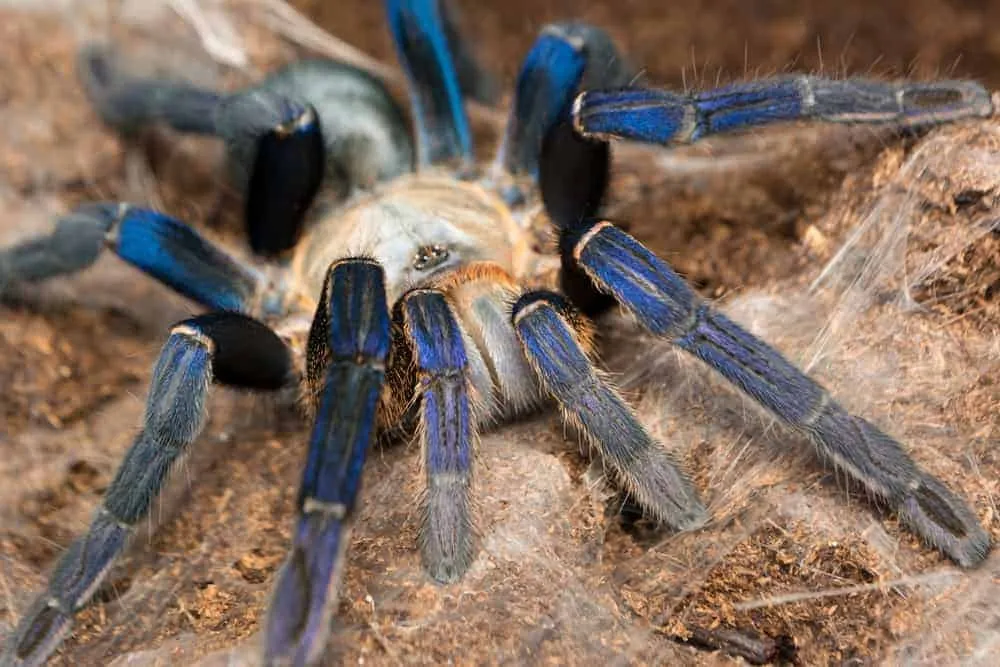
The Cobalt Blue Tarantula’s most striking feature is undoubtedly its vibrant coloration. This species showcases a remarkable metallic blue hue that covers its legs, carapace, and sometimes extends to its abdomen. This coloration is not just a visual marvel, but also serves a purpose. The color arises from structural coloration, where microscopic structures on the tarantula’s exoskeleton manipulate light to create the dazzling blue effect. This unique appearance makes the Cobalt Blue Tarantula a popular choice for both novice and experienced keepers. The contrast of the blue against the darker body adds to its visual appeal. Understanding the biology behind this coloration allows a deeper appreciation of the tarantula’s natural beauty and the intricate details of its structure.
Distinguishing Features of the Cobalt Blue Tarantula
Beyond its famous blue legs, the Cobalt Blue Tarantula possesses other defining characteristics. Its body is typically a dark gray or black, providing a striking contrast to its blue appendages. The size of the tarantula can vary, with females generally growing larger than males. The males also have more slender bodies compared to the females, which is a sexually dimorphic feature. Identifying these features is crucial when determining the sex and overall health of the tarantula. Moreover, the presence of urticating hairs, a common defensive mechanism in many tarantula species, provides another distinguishing feature. While Cobalt Blues do have these hairs, they are less reliant on them compared to other species. The overall morphology of the tarantula, from its chelicerae to its spinnerets, contributes to its unique appearance and highlights its place in the spider family.
Unique Coloration
The unique coloration of the Cobalt Blue Tarantula is a fascinating aspect of its biology. The metallic blue is a result of nanostructures in the tarantula’s exoskeleton, which reflect and scatter light to create the vibrant hue. This phenomenon is not due to pigments, but rather to the way light interacts with the exoskeleton’s surface. The blue coloration is most prominent on the legs and carapace, and while the abdomen is usually darker, it may display some blue iridescence depending on the individual tarantula and the angle of light. The intensity of the blue can vary, being brighter in some individuals and appearing more subdued in others. This structural coloration is not only visually stunning but also serves as a functional adaptation, though its exact purpose is still being studied. Scientists believe it might play a role in camouflage, communication, or thermoregulation, making the cobalt blue a remarkable example of nature’s artistry.
Behavioral Characteristics of the Cobalt Blue Tarantula
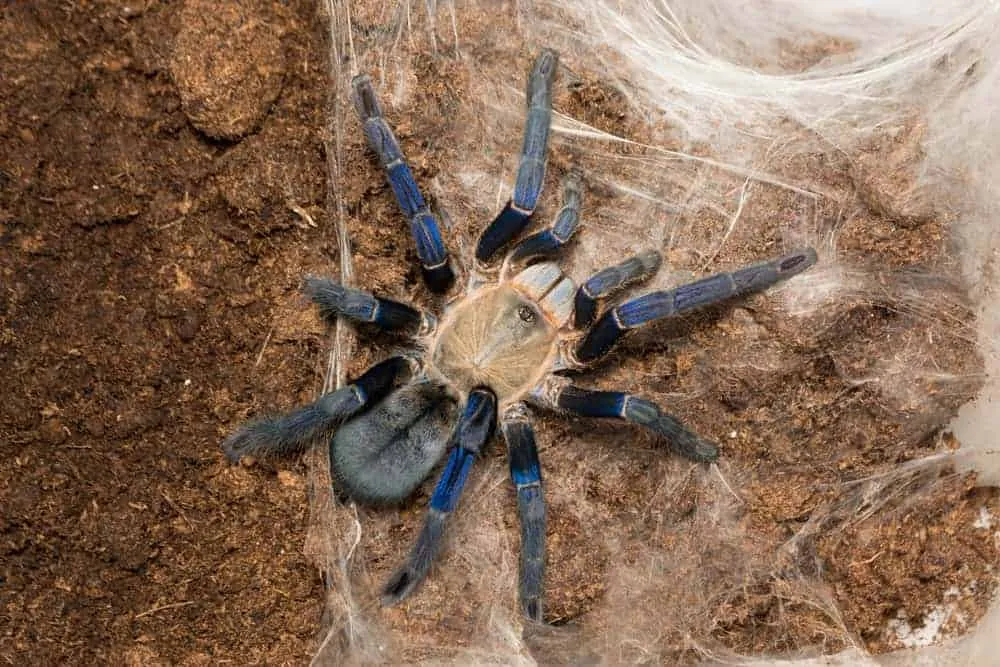
The Cobalt Blue Tarantula’s behavior is as captivating as its appearance. Known for being a fast and sometimes skittish species, it is not typically recommended for beginners. They are primarily burrowing tarantulas, spending a significant amount of time underground. They are opportunistic hunters, ambushing their prey. The cobalt blue tarantula is known for its nocturnal habits and they become most active during the evening and night. This behavior is typical of many tarantula species, allowing them to avoid predators and take advantage of cooler temperatures. Understanding these behavioral patterns is crucial for providing appropriate care in captivity, including suitable enclosure design and feeding schedules.
Temperament and Handling
The temperament of a Cobalt Blue Tarantula is a significant consideration for potential keepers. While individual personalities can vary, this species is generally known to be fast and defensive, making it less suitable for handling. They are prone to bolting, which means they can move very quickly, potentially leading to escapes or accidental injuries. When threatened, they may raise their front legs and exhibit a defensive posture. Handling should be kept to a minimum and only be attempted by experienced keepers who are familiar with the tarantula’s behaviors. The potential for bites, though rarely medically significant, can be a deterrent. It’s also crucial to remember that stress from handling can be detrimental to the tarantula’s well-being, so it’s essential to respect its space and preferences.
Defensive Mechanisms
Cobalt Blue Tarantulas possess several defensive mechanisms. While they do not heavily rely on urticating hairs as some other tarantula species do, they can still flick them. They can also deliver a bite if they feel threatened. The bite itself is not usually life-threatening to humans, but it can be painful and cause localized symptoms. Additionally, the tarantula’s speed allows it to quickly retreat to its burrow, a primary means of defense. Understanding these defensive strategies is crucial for safe handling and care. It helps keepers anticipate the tarantula’s responses to stimuli and provides a better understanding of how to handle or avoid stressing the animal. Being aware of these defensive mechanisms can ensure that both the tarantula and its keeper remain safe and comfortable.
Cobalt Blue Tarantula as Pets
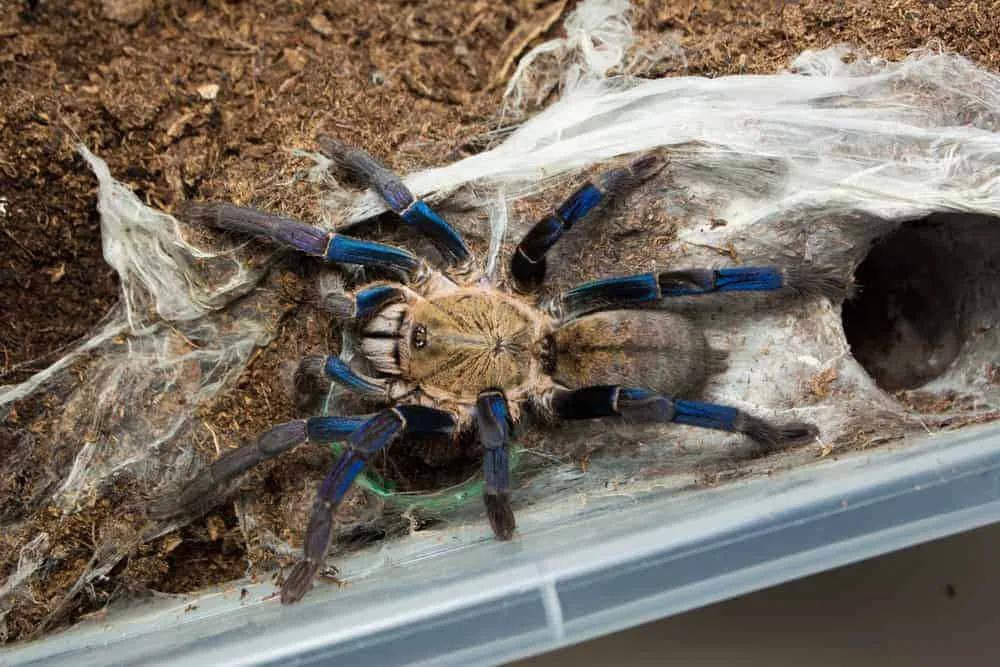
Keeping Cobalt Blue Tarantulas as pets can be a rewarding experience for the right person. Their striking appearance and unique behavior make them a fascinating subject of study. However, they are not recommended for beginners due to their defensive nature and specific care requirements. They require a commitment to providing a suitable environment, including proper humidity, temperature, and a secure enclosure. Owning a Cobalt Blue Tarantula involves a responsibility to understand and meet its needs, ensuring its health and well-being. For those who can provide the necessary care, these spiders offer a captivating glimpse into the natural world and the beauty of arachnids.
Ideal Enclosure Setup
Creating the ideal enclosure is paramount for the well-being of a Cobalt Blue Tarantula. The enclosure should be appropriately sized, allowing the tarantula to move freely without feeling cramped. A secure enclosure is essential to prevent escapes. The substrate should consist of a mixture of coco coir, peat moss, and vermiculite to maintain humidity and facilitate burrowing. Provide a hide, such as a cork bark or half-log, where the tarantula can retreat. Maintain a temperature between 75 and 85 degrees Fahrenheit, and keep the humidity at approximately 70-80 percent. Regularly mist the enclosure and provide a shallow water dish for drinking. The setup should also include ventilation to prevent mold growth. Regularly cleaning the enclosure and removing any leftover food is also crucial. A well-designed enclosure that replicates the natural habitat of the Cobalt Blue Tarantula is crucial for its health and happiness.
Diet and Nutrition
Providing a balanced diet is essential for the Cobalt Blue Tarantula’s health. In the wild, these tarantulas feed on various insects. In captivity, they thrive on a diet of appropriately sized insects such as crickets, mealworms, roaches, and other invertebrates. Feeding frequency depends on the tarantula’s age and size, with juveniles needing more frequent meals. It is crucial to ensure that the prey insects are gut-loaded with nutritious food before offering them to the tarantula. This process ensures that the tarantula receives essential vitamins and minerals. Remove uneaten prey within 24 hours to prevent stress and maintain a clean enclosure. Fresh, clean water should always be available in a shallow dish. Avoid overfeeding, as this can lead to health problems. A proper diet is a cornerstone of keeping a Cobalt Blue Tarantula healthy and thriving.
Lifespan and Care Tips
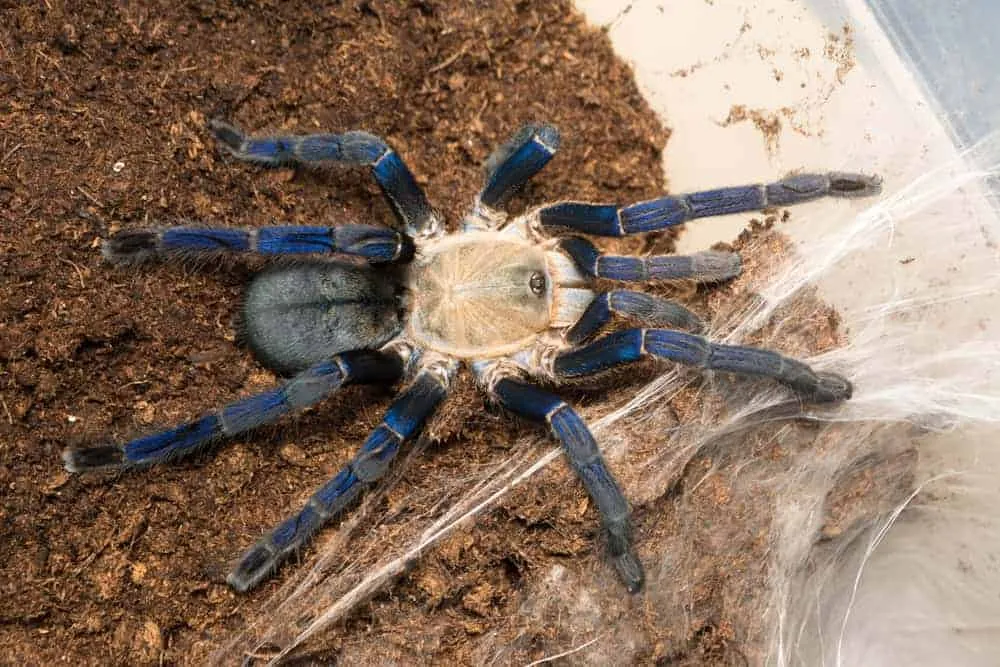
Cobalt Blue Tarantulas can live for a significant amount of time, with females often outliving the males. On average, females can live for 12-15 years, while males typically have shorter lifespans, around 3-5 years after reaching maturity. Providing proper care is essential to maximize their lifespan and ensure their well-being. This includes maintaining a suitable environment, offering a balanced diet, and minimizing stress. Avoid unnecessary handling, as these tarantulas are easily stressed. Monitor the tarantula for signs of illness or molting problems, and consult with a veterinarian experienced in exotic pets if needed. Regular observation of the tarantula’s behavior, feeding habits, and overall health can help identify any potential issues early on. Understanding their lifespan and implementing proper care practices allows you to enjoy these fascinating creatures for many years.
